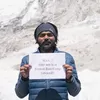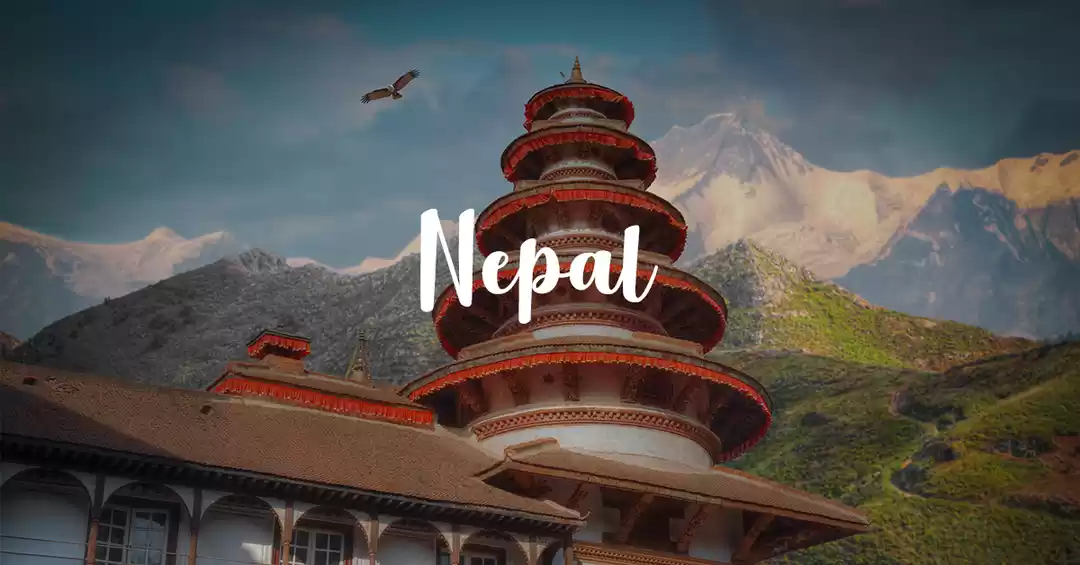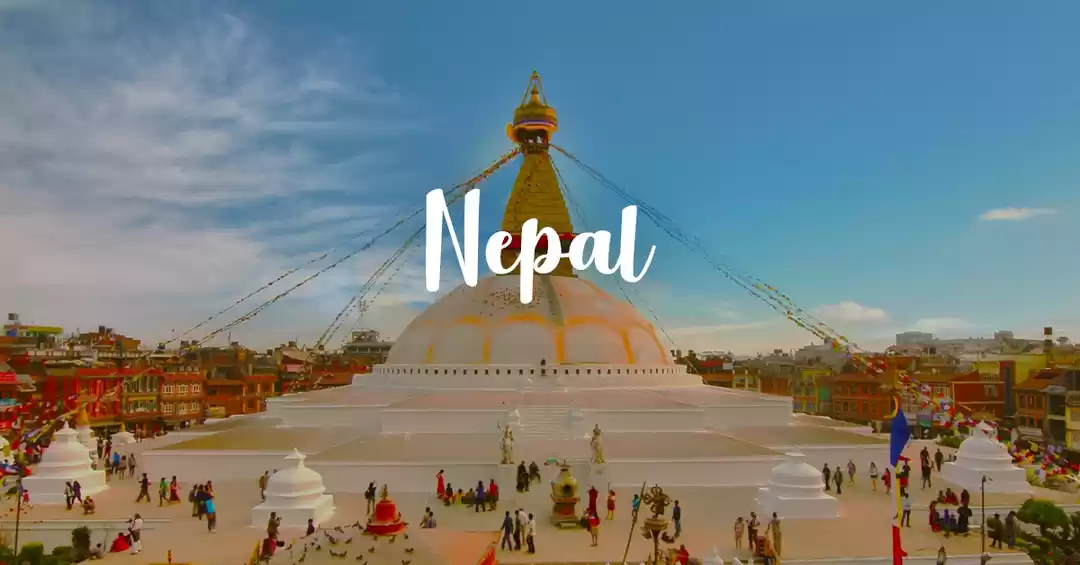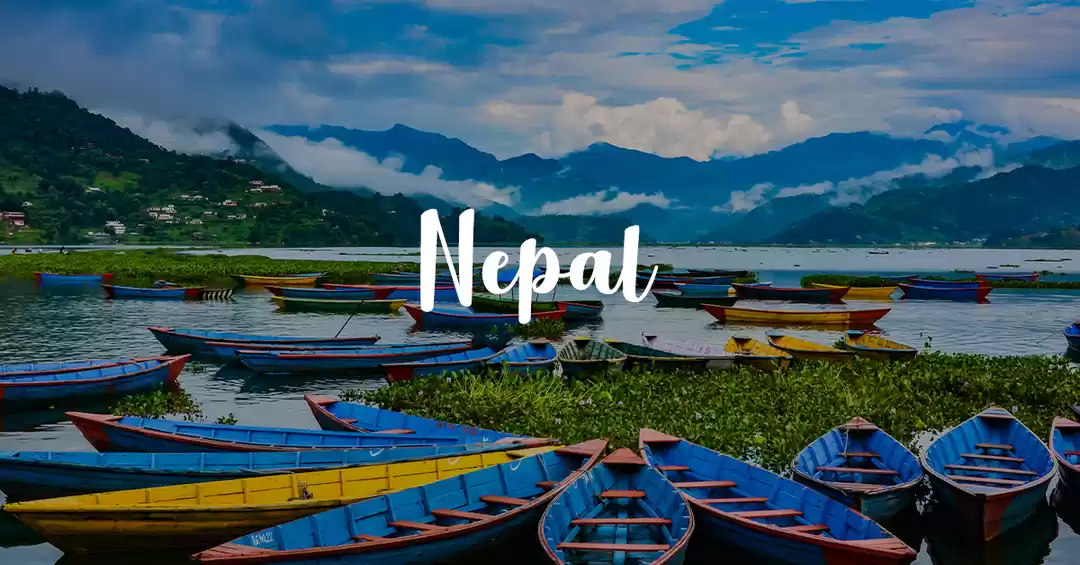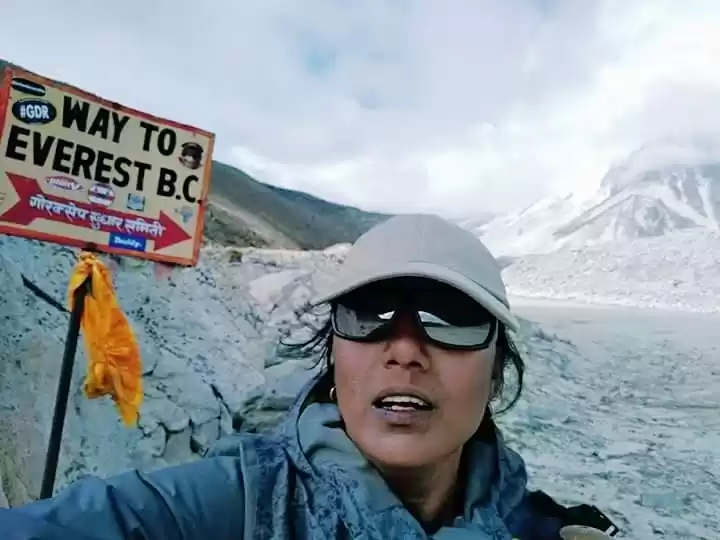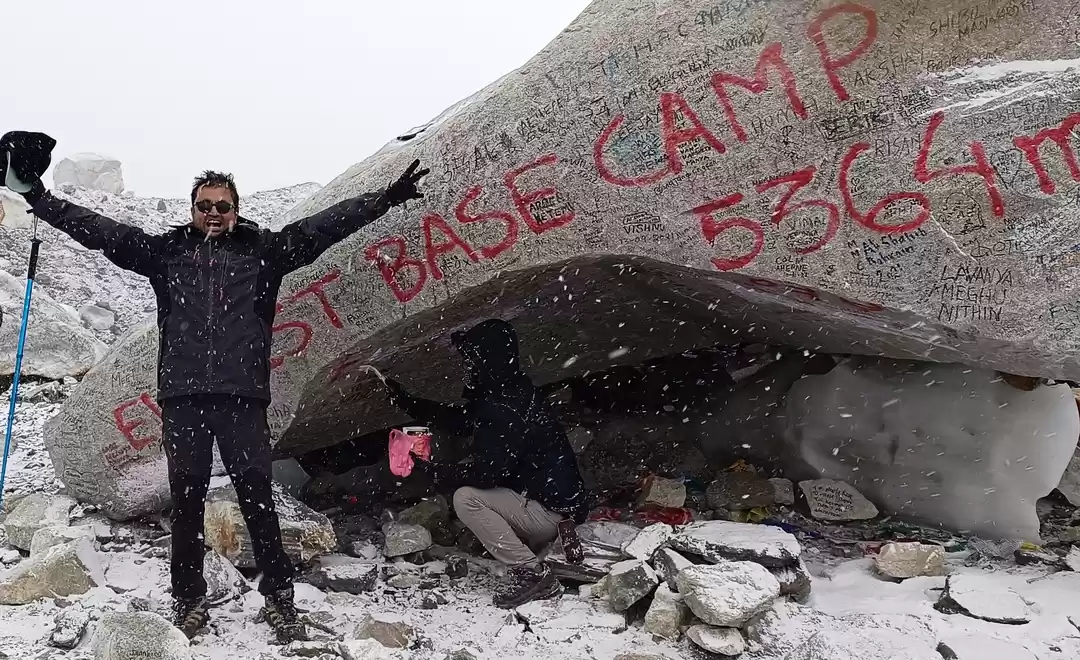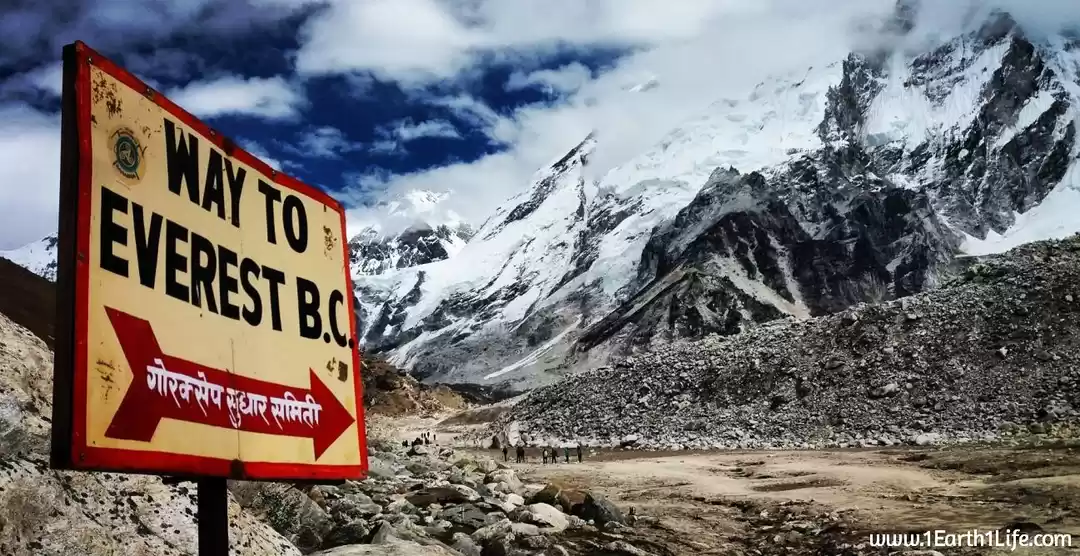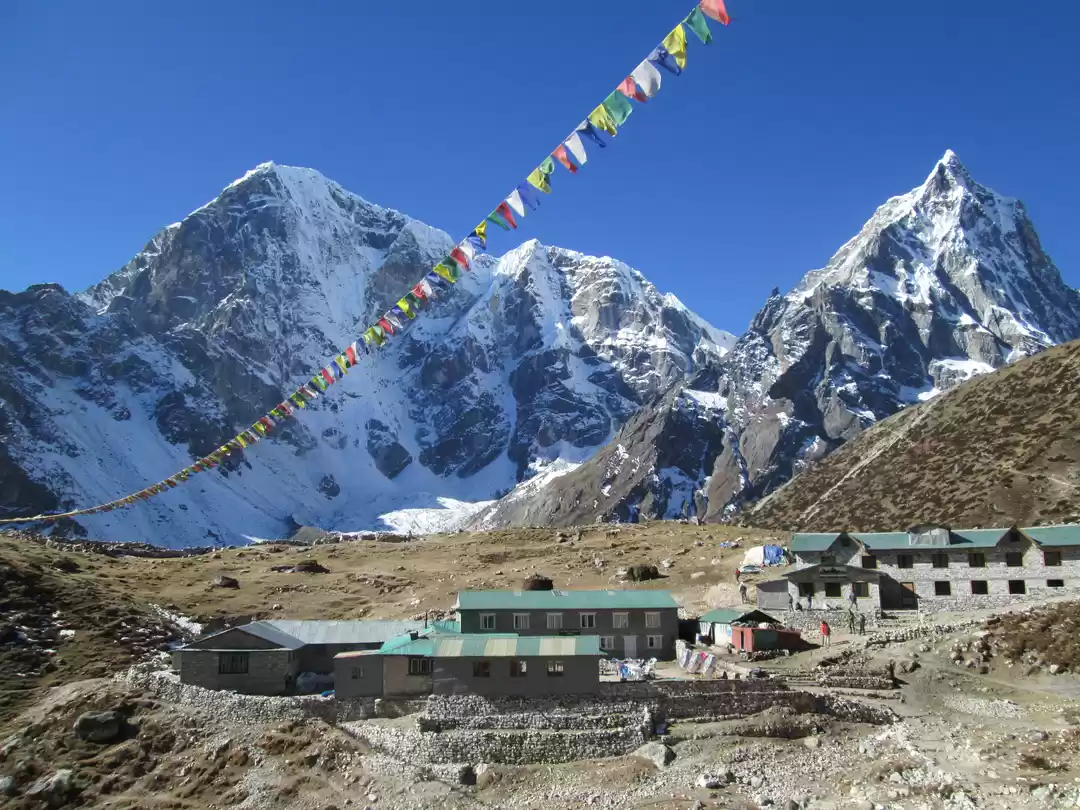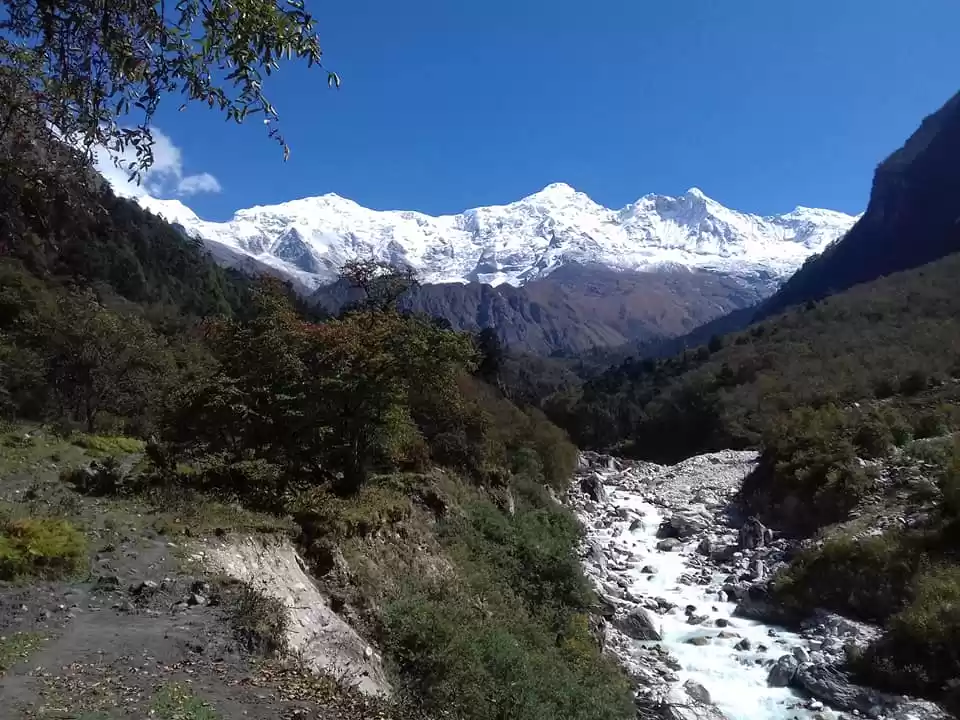
Everest Base Camp is one of those fascinating treks many would want to do. The fact that you would be reaching the base of the highest mountain in the world, and would be walking on the same path as some of the greatest mountaineers ever walked is highly absorbing. The first big decision you need to make is whether you will do the EBC on your own or as part of a guided group. An independent EBC trek will be cheaper, no doubt, but you’ll also be left to handle all of your trekking permits, accommodations, domestic flights, and logistics yourself. If you are a budget backpacker looking to save money, or someone with an adventurous mindset, or someone who loves to travel independent, Everest Base Camp trek is an excellent option. I did EBC on my own along with the company of a close friend. I have listed out some of the things through my experience which can help you plan for EBC.

1. Difficulty and the preparation needed for EBC
EBC can be graded at two levels, Moderate and Difficult. Moderate for those who have already done any Himalayan trek consisting 5-6 days and difficult for those who are starting fresh. That should answer, the experience needed for the trek as well. If you are fit and interested in some high altitude adventure put EBC on your bucket list. Having some high altitude experience already would help you acclimatise better.
Regardless of the experience preparation is very much important for any Himalayan trek. Preparation should include a good amount of cardio at a sustained level to improve aerobic fitness. During EBC, you have to cover 12 km on an average each day. This requires a good amount of endurance. You can begin by jogging every day. Start slow and increase your pace, target running 5 km in 35 minutes and gradually increase to 10 km in 60-70 minutes after a week or 10 days. Swimming, cycling and stair climbing without too many breaks in between can help too. Maintaining a steady pace for the number of Kms you will have to walk each day is very important. Aerobic activities, such as running, biking and swimming will improve the maximum volume of oxygen that your body can use. This is important for a high altitude trek as there will be less oxygen in the air for you to consume and each breath has to count.
2. Best time to trek EBC
EBC is one of the very few treks which can be done throughout the year. However its best done in March- April, and September to October for the best views of the mountains. I did EBC in June- July which is a Peak off season, and still had the best of the experiences. Everest which could be seen from Namche itself on a clear day kept us waiting and calling us to be seen only from the close proximity. Every now and then the weather would clear and leave us mesmerised with what we were surrounded with.
3. Season v/s off season
Rains and Views - these are the Two main factors which distinguish trekking in season vs off season. During March - April the weather is clear and one gets the best views of the mountains throughout the trail. However the route to EBC is like an International Highway and it can be crowded with trekkers from every known nation making their way to Base camp. One might find it difficult to get hotels and seeing so much crowd on the mountains can be annoying. This is the advantage off season holds, no crowds and hotels can be found easily and weather clears every now and then to give a glimpse of the surrounding mountains filling you up with Joy. Once you reach Dingboche or Lobuche, you would be at an altitude where weather would always be clear and all the mountains are visible.
3. Hiring a guide or a porter
A porter would help you carry your bag, all the way from Lukla to Base camp and back. The guide will help you to navigate through the trail, help you find the hotels and would be a great company to chat with during the 12 days. One can do without both of these if you are able to carry your backpack and find the hotels on your own. I did EBC without a guide or a Porter, but I had my best friend for Company. So if you are planning solo hiring a guide is a very good option, as you will have at least someone to talk to and take your pictures.

4. Essentials to carry
EBC is a high altitude difficult trek on a rough terrain, one must be well equipped and have all the essentials.
Trekking shoes: Strong, comfortable and preferably water-proof
Back pack: 60-65L with rain cover and a comfy day-pack (25-35L)
Jacket: Light water proof or down jacket
Fleece: - 1 no, a woollen sweater can be used as alternative
Trek pants: - 2 Synthetic and avoid shorts and denims
Shirts: 3-4 Dry fit T-Shirts
Thermals: 2 pair
Poncho: 1 no and a better option than rain jackets
Socks: 4 pairs
Others: Trekking pole, gloves Sunglasses, a small day pack, head torch, Hat, gloves, a balaclava, medical kit,oximeter, toilet papers, wet wipes, and sanitisers.

5. Permits
There are two different permits you need to trek to Everest Base Camp. The first is a Trekkers Information Management System (TIMS) permit. This can be obtained from Nepal Tourism board office near Thamel, Kathmandu.
TIMS Card fees are as follows – Group trekker: NPR's. 1,000;
Free individual trekker (FIT): NPR's. 2,000. Per person.
For individuals from SAARC countries the fees are as follows Group trekker: NPR's. 300; FITs: NPR's. 600, per trekking route per person per entry.
The second permit is Sagarmatha National Park Entry Permit which can be obtained once you are on the trail at the office in Monjo. Sagarmatha National Park entry permit fee for foreigners: 3,400 NPR, and for SAARC nationals: 1,500 NPR.
6.Booking flight to Lukla
The small mountain town of Lukla is the typical starting point for treks in the Everest region, and it’s a busy little place. As there is no motorised road there from Kathmandu, there is only one way to get to Lukla, by air. Tara Airlines, Sita Air, Summit Airlines provide daily services to and from Lukla and the costs vary from Nationals and seasons. We booked our flight through Tara airlines and the price was 14670 NPR per person one way. You can book the tickets from their official website.

6.Route and itinerary
There are 2-3 routes through which EBC can be done, depending upon the no of days you have you can include Gokyo-Ri or Three passes trek in your Itinerary. The standard Itinerary is of 11 Days starting from Lukla to EBC and back to Lukla.

Day 1: Lukla to Phakding or Monjo (14 km, 7-8 Hours, 9000 ft).
Day 2: Monjo to Namche Bazaar (7 km, 4-5 Hours, 11300 ft).
Day 3: Namche Bazaar Acclimatisation Day.
Day 4: Namche Bazaar to Tengboche (12 km, 6-7 Hours, 12650 ft).
Day 5: Tengboche to Dingboche (12 km, 6-7 Hours, 14250 ft ).
Day 6: Dingboche Acclimatisation Day.
Day 7: Dingboche to Lobuche (12 km, 7-8 Hours, 16200 ft )
Day 8: Lobuche to Gorakshep to EBC and back to Gorakshep (15 km, 8-9 Hours, 17550 ft).
Day 9: Gorakshep to Kala Patthar and to Periche (20 km, 10 Hours, Kala Patthar 18200 ft, Periche 14100 ft)
Day 10: Periche to Namche (15 km, 7-8 Hours, 11300 ft)
Day 11: Namche to Lukla (21 km, 8-9 Hours, 8500 ft)

8.Trek
The trail to EBC is very well marked right from Lukla to the base camp. You can buy a map (Around 250 NPR) from any shop in Kathmandu and easily follow that. Once you start your day you know where you would be heading next and can ask for direction from plenty of people moving around. At least every half an hour you would find a fellow trekker or a localite in the EBC Trail.

Start your day early in the morning after the breakfast and you would be able to reach the next destination by lunch time. Most of the localites speak good English and Hindi and you can find the hotels on your own. Some hotels do offer free bed or room to stay if you have meals over there. Just move around and find the hotels based on your comfort and budget. Its important that you stick to the itinerary whichever you are following, and do not try to skip acclimatisation days for any reason. The standard itinerary is laid based on the 'Climb high and sleep low' rule, which is the single most essential thing on high altitude treks. Once out of Namche Bazaar you will be in the defined high altitude zone, after reaching your next destination ensure to go for an acclimatisation day in the evening. At each of your next destinations there are plenty of small peaks near by which make up for a good acclimatisation walk.

There are plenty of water sources and refreshment shops till Gorakshep, drink lot of water and keep yourself hydrated all the time. You would find plenty of shops and houses on the way up to Namche Bazaar. After that trail becomes difficult but still easy to navigate with the help of the map. There are sign boards placed at some of the tricky junctions. After Tengboche its literally just one way till Lobuche with gradual ascent. After Lobuche its all rocky terrain till EBC and one might find it slightly difficult to navigate this, but with the Khumbu glacier to your right you can navigate only one way and all the trails lead to EBC.

9. Expenditure
Below is the snippet of our expenditure during the trek. This excludes all the flight charges to Kathmandu and then to Lukla. Everyday we would be spending around 2500 NPR's for two people. This includes three meals and the tea houses stay.
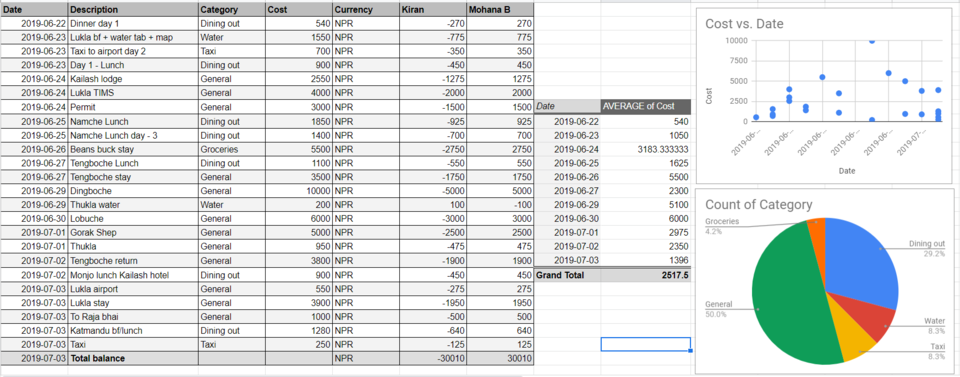
As you can see from the above pic as you go up from Lukla the cost per day increases, this is because of the remoteness of the places. Nevertheless it should not cost you more than 3000 NPR's per day for Two people. We always had this parameter in mind and tried to negotiate the prices at tea houses or lodges for stay. A glass of tea which would cost around 80 NPR at Lukla would cost 250-300 NPR at Gorakshep. Carrying your own tea bags and milk powder would be an excellent idea. Lodges or hotels are mostly referred as Tea houses and most of them offer free bed or accommodations if you have Two meals over there, if not the rooms shouldn't cost more than 500 NPR's per day anywhere between Lukla and Gorakshep.

You'll get plenty of options for breakfast including sandwiches, hot porridge or eggs, potatoes, and toast. Lunch and dinner items include Nepalese stew, fried noodles, fried rice, and dal baht the local Sherpa meal consisting of lentil soup, rice, and veggies which is a great source of protein and much needed for the trek.

10. Things to note
There are ATM's available in Lukla and Namche but its better if you carry all the required cash right from Kathmandu
Carry an Oximeter if you are travelling solo, and keep checking the reading of your oxygen level everyday before starting and after reaching the next destination
Follow the 'Climb high sleep low' rule strictly and try to go for short acclimatisation walks everyday when you reach your next destination.
The weather at Lukla is very unpredictable especially in the off season, due to which flights won't take off for days from Lukla or sometimes Kathmandu itself. Its wise to keep at least Two buffer days apart from the standard itinerary for the entire trip.
Lukla airport is hassle free and the airlines are very flexible, in case if you end up not using your buffer days and return to Lukla Two days before your scheduled return you can catch any available flight from the same airlines and fly back to Kathmandu on the same day .


